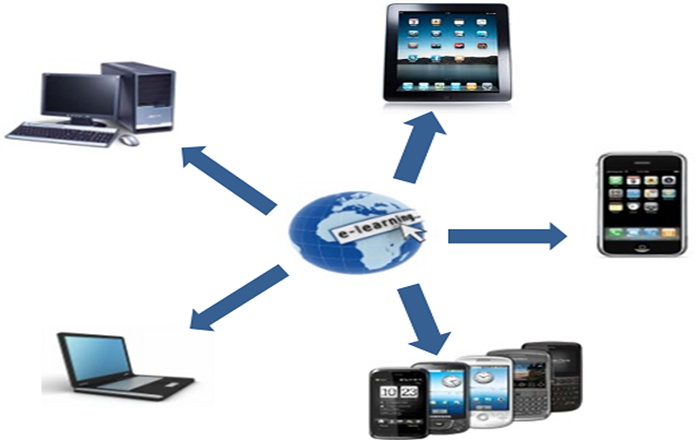Localizing Your Mobile Learning App – 3 Best Practices

Mobile learning (m-learning) apps are the hottest trend in the corporate training world. A survey by Towards Maturity revealed 41% of top learning organizations use m-learning apps to train their staff, and this number is only likely to grow. And, a study by Portio Research showed Asians would make up half of the mobile app using population by 2017. The phenomenal growth in the number of non-Anglophone users of mobile apps is compelling companies to translate the content of their m-learning applications and localize them.
But, how can organizations ensure their m-learning applications meet the training needs of their staff in different regions? What does it take to render the learning content of their mobile apps in the native languages of their people? Well, they need to follow 3 best practices.
Best Practice #1: Plan well for the localization
The Mobile App Translation: Industry Report & Guide, published by Lionbridge Inc., states 60.1% of companies believe time and cost barriers prevent them from localizing their m-learning applications. These problems can be effectively overcome through good planning. It is advisable to begin the development of apps with multilingual learners in mind. This would help you come up with proper schedules for the localization.
Another major issue faced by firms is not knowing the languages into which the content of m-learning apps needs to be translated. Lionbridge estimates that nearly 23.6% of organizations are confused about the choice of languages. Translating the content into “unnecessary” languages can result in the wastage of precious time and money. For instance, one of our clients rendered the content of its m-learning app into both traditional Chinese and simplified Chinese. But, it realized later that there were few takers for the content translated into the former. You can avoid this problem by understanding the language preferences of your staff thoroughly.
Best Practice #2: Choose the right app platform
The choice of the m-learning app platform needs to be guided by the languages in which its content is rendered. Agata Jajszczyk, ASO specialist at Adapt Worldwide, a Weloclaize agency, advises organizations to check the languages available in developer consoles before zeroing-on a mobile app platform. For instance, iTunes supports learning content translated into the following 28 languages.
Chinese (Simplified), Chinese (Traditional), Danish, Dutch, English (Australia), English (Canada), English (UK), English (US), Finnish, French, French (Canada), German, Greek, Indonesian, Italian, Japanese, Korean, Malay, Norwegian, Portuguese (Brazilian), Portuguese (Portugal), Russian, Spanish (Mexico), Spanish (Spain), Swedish, Thai, Turkish, and Vietnamese.
On the other hand, Google Play supports the content of m-learning apps localized in 73 languages.
Afrikaans, Amharic, Arabic, Armenian, Azerbaijani, Basque, Belarusian, Bengali, Bulgarian, Burmese, Catalan, Chinese (Simplified), Chinese (Traditional), Croatian, Czech, Danish, Dutch, English, English (United Kingdom), English (United States), Estonian, Filipino, Finnish, French, French (Canada), Galician, Georgian, German, Greek, Hebrew, Hindi, Hungarian, Icelandic, Indonesian, Italian, Japanese, Kannada, Khmer, Korean (South Korea), Kyrgyz, Lao, Latvian, Lithuanian, Macedonian, Malay, Malayalam, Marathi, Mongolian, Nepali, Norwegian, Persian, Polish, Portuguese (Brazil), Portuguese (Portugal), Romanian, Romansh, Russian, Serbian, Sinhala, Slovak, Slovenian, Spanish (Latin America), Spanish (Spain), Spanish (United States), Swahili, Swedish, Tamil, Telugu, Thai, Turkish, Ukrainian, Vietnamese, Zulu.
Best Practice #3: Isolate the translatable content from the code
Companies need to separate the content of their m-learning apps from their code to ensure speedy and effective translations. A Guide to Prepping for Localization suggests firms isolate the learning content in a file, such as an MS-Word document and hand it over to the translator.
There are two advantages of isolating the content of the m-learning app. First, it ensures the architecture of the app is locale-independent. Also, it helps you test the accuracy of the localized m-learning app’s content easily.
M-learning apps are used extensively in the corporate training world. Firms need to render the learning content of their mobile apps and adapt them to suit the needs of learners in various locales. For this, it is important to plan effectively. Companies need to choose the right mobile app platform to deliver their learning content. It is advisable to isolate the content of the localized m-learning app in a separate file. Hope you liked this post. Do share your views.



![Lectora Media Library for Visually Stunning Courses [Infographic]](https://blog.commlabindia.com/hubfs/Imported_Blog_Media/lectora-media-library-benefits-infographic-cover.jpg)

